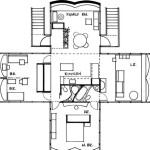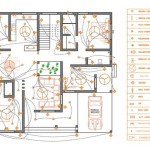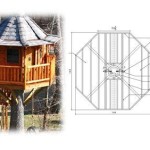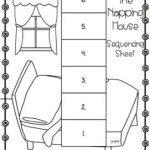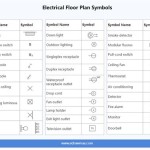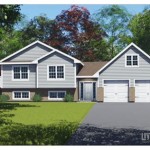Three-Story House Plans With Elevator: Accessibility and Luxury Combined
Three-story house plans offer significant living space and the potential for impressive architectural design. However, navigating multiple floors can present challenges, particularly for individuals with mobility limitations or those planning for aging in place. Integrating an elevator into a three-story home design effectively addresses these concerns, providing both accessibility and added convenience. This article explores various aspects of three-story house plans with elevators, discussing design considerations, benefits, and practical implementation.
Understanding the Need for Elevators in Multi-Story Homes
The primary reason for incorporating an elevator into a three-story house plan is to enhance accessibility. Elevators eliminate the need for stairs, making the entire home accessible to individuals with disabilities, seniors, and those recovering from injuries. This inclusive design ensures that all residents and guests can move freely between floors without physical strain or limitations. Beyond accessibility, elevators offer convenience for transporting heavy objects, groceries, or luggage, reducing the physical effort required for everyday tasks. Furthermore, an elevator can increase a home’s resale value, appealing to a broader range of potential buyers who prioritize accessibility and long-term living solutions.
Traditional stairs can become a significant obstacle as people age. Maintaining balance and strength for climbing stairs can decline, leading to an increased risk of falls. An elevator provides a safe and reliable alternative, allowing homeowners to remain in their homes comfortably and independently for a longer period. This proactive approach to accessibility planning is particularly relevant for individuals who anticipate future mobility challenges or wish to future-proof their homes for potential health changes.
The installation of an elevator is not solely driven by medical needs. Lifestyle considerations also play a crucial role. For example, individuals who frequently entertain guests, have young children, or simply appreciate the convenience of effortless vertical transportation may find an elevator a valuable addition. It eliminates the awkwardness and potential hazards associated with carrying items up and down stairs, creating a more relaxed and enjoyable living environment.
Design Considerations for Three-Story House Plans with Elevators
Integrating an elevator into a three-story house plan requires careful planning and consideration of various design factors. The location, size, and type of elevator are crucial elements that influence the overall functionality and aesthetic appeal of the home. Consulting with experienced architects, engineers, and elevator specialists is essential to ensure a seamless and code-compliant installation.
Location: The placement of the elevator within the house plan is a critical decision. Strategic placement can minimize disruption to the existing layout and maximize convenience for users. A common approach is to locate the elevator near the main entrance or in a central area of the house, providing easy access to all floors. Stairwells are often repurposed or redesigned to accommodate the elevator shaft, optimizing space utilization. The elevator should ideally be positioned in a location that minimizes travel distance from living areas, bedrooms, and other frequently used spaces.
Size and Capacity: The size and capacity of the elevator must be carefully considered based on the anticipated usage and number of occupants. Residential elevators typically range in size from compact models suitable for one or two people to larger models that can accommodate wheelchairs, walkers, or multiple passengers. The interior dimensions should be sufficient to allow comfortable maneuvering and ensure compliance with accessibility standards. The weight capacity of the elevator should also be adequate to handle the typical load, including passengers and any items being transported.
Elevator Type: Several types of residential elevators are available, each with its own advantages and disadvantages. Hydraulic elevators are a traditional option that utilizes a hydraulic piston to lift and lower the cab. They are generally reliable and relatively affordable, but require a machine room for the hydraulic equipment. Traction elevators use cables and a counterweight system, offering a smoother and quieter ride. They may require more headroom than hydraulic elevators, but can be more energy-efficient. Pneumatic elevators, also known as vacuum elevators, use air pressure to lift and lower the cab. They are space-saving and require minimal construction, but may have limited weight capacity. Choosing the appropriate elevator type depends on factors such as budget, space constraints, and performance requirements.
Aesthetic Integration: The elevator should be seamlessly integrated into the overall architectural design of the house. The cab's interior finishes, lighting, and control panels should complement the surrounding décor and contribute to the home's aesthetic appeal. The elevator shaft can be concealed within walls or incorporated as a design feature, depending on the desired visual effect. Careful attention to detail ensures that the elevator enhances the beauty and functionality of the home without appearing as an afterthought.
The Benefits of Including an Elevator in a Three-Story Home Plan
The inclusion of an elevator in a three-story home provides numerous benefits beyond accessibility, enhancing both the quality of life and the long-term value of the property. These benefits extend to convenience, safety, and overall livability.
Enhanced Convenience: An elevator dramatically simplifies daily tasks by eliminating the need to carry heavy items up and down stairs. Groceries, luggage, furniture, and other bulky items can be easily transported between floors, reducing physical strain and saving time. This convenience is particularly valuable for homeowners who frequently entertain, have young children, or manage health conditions that limit their mobility.
Improved Safety: Stairs pose a significant risk of falls, especially for seniors and individuals with mobility impairments. An elevator provides a safe and reliable alternative, reducing the risk of accidents and injuries. The smooth and controlled movement of the elevator ensures a comfortable and secure ride, eliminating the potential for slips, trips, or stumbles. Safety features such as emergency stop buttons, backup power systems, and phone communication ensure that occupants can safely evacuate the elevator in the event of an emergency.
Increased Property Value: Incorporating an elevator into a three-story home can significantly increase its resale value. As the population ages, the demand for accessible homes is growing, making elevators an attractive feature for potential buyers. A home with an elevator appeals to a wider range of buyers, including those with disabilities, seniors, and families with young children. The perceived value of the home is also enhanced by the addition of a luxury amenity that provides convenience and enhances the overall living experience.
Aging in Place: An elevator enables homeowners to remain in their homes comfortably and independently as they age. By eliminating the physical challenges of stairs, an elevator allows seniors to maintain their lifestyle and avoid the need to relocate to a more accessible dwelling. This proactive approach to aging in place provides peace of mind and ensures that the home can adapt to changing needs over time. Planning for the future with an elevator ensures that the home remains a comfortable and safe environment for years to come.
Design Flexibility: Adding an elevator can influence floorplan design. By eliminating the need for a central staircase, the layout of each floor can be optimized for living space. Previously unusable space can be repurposed, and the overall flow of the home can be improved. The ability to access all floors without stairs opens up possibilities for creative design solutions and enhances the overall functionality of the home.
In conclusion, while the integration of an elevator into a three-story house plan requires careful consideration and planning, the benefits of enhanced accessibility, convenience, safety, and increased property value make it a worthwhile investment. By addressing the needs of a diverse range of occupants and adapting to changing lifestyles, three-story house plans with elevators offer a comprehensive solution for modern living.

4 Bedroom Three Story Southern Coastal Home With A Loft Wet Bar And Elevator Floor Plan House Plans Beach Flooring

3 Bedroom Three Story Luxury Contemporary Mediterranean Home With Elevator And Balconies Floor Plan House Plans

7 Bedroom Luxury Mediterranean Home Floor Plan With Elevator And Courtyard

Coastal Retreat Three Story Beach House Floor Plan Stays Focused On The Waterfront

Elevator Equipped House Plans Sater Design Collection

Plan 666239raf 3 Story Modern House With Elevator And Front Garage 4237 Sq Ft In 2024 Floor Plans Mountain

House Plans With Residential Elevator Drummond

Home Plan Berkshire Bluff Sater Design Collection

V 580 39x56 Three Story House Plans 5300 Sq Ft Luxury Villa España Floor

Home Plans With Elevator

